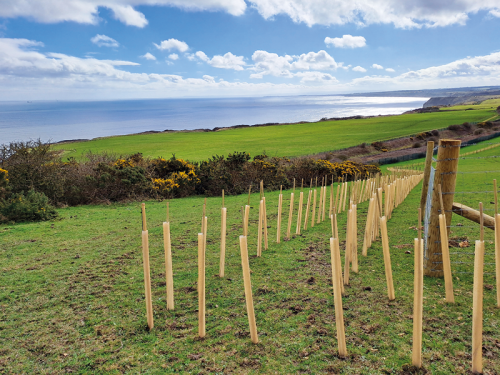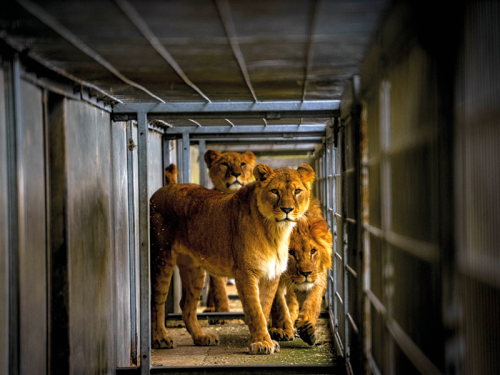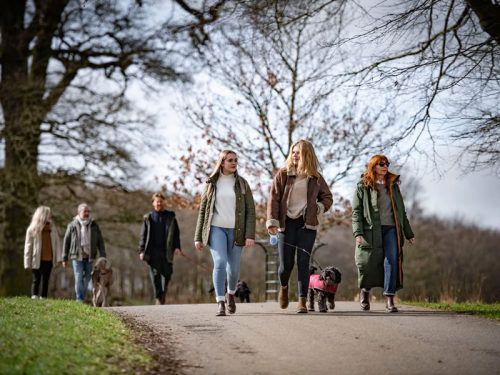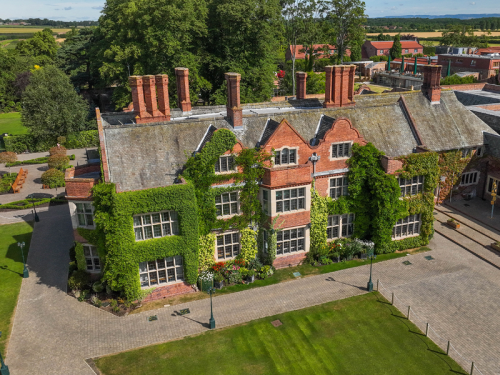How the Humber is Being Brought Back to Life

At the mouth of the Humber a miraculous transformation is taking place. Marine restoration manager Dr Kieran McCloskey and his dedicated team are nearing the midway point of an ambitious five-year project to breathe new life into the area


Led by the Yorkshire Wildlife Trust (in collaboration with Lincolnshire Wildlife Trust), Wilder Humber has taken a bold and far-reaching approach to wildlife restoration, choosing to target multiple areas for improvement at the same time in what Kieran describes as a ‘seascape’ approach. ‘Lots of projects will focus on just one aspect, but our main focus at Wilder Humber has been a seascape approach – how can we think about restoration in combination with all of these habitats together. That way they’re all benefitting each other,’ he explains. But what are the elements of the project? Namely, seagrass, saltmarsh and native oysters – all natural elements that the Humber has a long history of.
‘Just within the Humber alone, we have historic records that show the seagrass bed was close to 500 hectares, and now it’s dwindled down to around just 20 acres of what we would call “stable meadow”,’ Kieran explains. ‘And there used to be a large oyster fishery which was actually based in the Humber, and the Cleethorpes oyster was nationally recognised in the 1800s. It’s difficult to say how big it was from the records, but there are some indications that it was visible from land so we do have these historic records that show these habitats were prominent here, and that’s been the basis of building this sort of restoration project.’
The Humber’s decline in biodiversity is a reflection of the rest of the UK which has also suffered in recent decades. ‘In England alone we have lost 95 percent of our oyster habitat – although it could be higher. We’ve lost 85 percent of our saltmarsh, and then around 50 percent of seagrass has been lost as well. That’s the broader picture of habitat degradation and restoration.’ To try to mitigate the damage of this decline, it was important that the project took a careful and methodical approach to restoration, with an appreciation for how each element works in tandem to benefit the environment.

‘Seagrass is really well known for its carbon storage ability. I believe 15 percent of all carbon stores in the oceans are within seagrass meadows, but seagrass meadows cover less than one percent of the sea floor. So it’s definitely punching above its weight,’ Kieran says. ‘Oysters are important as filter feeders, and a single adult oyster will filter and clean around 200 litres of water a day. If you were to put an oyster in your bathtub with water it would have cleaned that water by the end of the day.
‘Yorkshire also has an extensive history of saltmarsh, peatland and wetland habitat which are really important. They create a floodplain, they protect coastal communities from flooding, and they provide wave protection as well. They’re also really good carbon stores themselves.’
They also work together to help and maintain each other, with oysters helping to reduce the strength of waves (which benefits the seagrass) and healthy seagrass meadows in turn help to maintain saltmarsh. ‘That’s the bigger goal – an interconnected mosaic of all of these habitats together,’ explains Kieran.
A day in the life of the restoration team is not always glamorous, but the work is fascinating, with techniques evolving over every cycle. ‘We have a yearly schedule that is based around each habitat. If you imagine the summer months as being our peak, we’re working in the in-between months to make sure that we’re building up to the success of the growth and activity which happens when it gets warmer.
‘Our overarching goals are to relay 500,000 native oysters, to restore four hectares of seagrass, enrich two hectares of saltmarsh and repair a quarter hectare of sand dune’
‘For example, with seagrass, our schedule is pretty well established now. In the summer around July we’ll collect seeds at our local seagrass meadow which has a healthy stability to it, and we’ll develop them so they mature in our labs and then we’ll start to put together planting materials,’ he explains. ‘We’re trying to plant them and give them a fighting chance to establish in the local area rather than letting all the seeds disperse. We’re trying to promote direct, active restoration to boost the local retention of seeds from our own meadow.
‘We’ll plant those in autumn, and over the winter we’ll store half of the seeds we’ve collected in the summer. We’ll germinate them leading into the spring time so they’ve grown into seedlings. We’ve also started trials with transplanting; that’s taking a healthy bit of seagrass and moving it to where it isn’t, and that’s been shown to actually be very successful because the area you take it from will fill in with more healthy seagrass quickly and the more mature seagrass will have a better survivability chance than a seed. We do that at the end of our planting season, and then start over again.’

For the team, it’s all about finding the processes which work best for the area. For their oysters, they’ve recently started a new method of reintroduction – a first in the UK. ‘It’s called remote setting of native oysters,’ Kieran says. Where classic oyster restoration begins with adult oysters, remote setting starts with larvae. ‘You’ll have settlement substrate in a controlled tank near where you want to put them, and you’ll bring in larvae that’s been hatched at a facility. They’ll cool them down to around four degrees so they’re dormant, they’ll ship them to us, and then on site we’ll slowly warm them up so they’re awake and ready to be active. Once they’re settled we can then deploy them into a habitat for them. The idea is that they’ve already been settled and we can see them grow from there – you’re taking out the uncertainty of the adults’ survivability and likelihood to spawn where they need to.’
With such a far-reaching plan, it makes sense that the project’s goals are ambitious. ‘Our overarching goals are to relay 500,000 native oysters, to restore four hectares of seagrass, enrich two hectares of saltmarsh and repair a quarter hectare of sand dune,’ says Kieran.
Beyond the project though, the possibilities for the Humber are endless. ‘My personal 10-year hope is that this would be a launching point. This is a five-year demonstrator where we’re working on the methods and practices. We’re figuring out what works best for this area and what doesn’t,’ Kieran explains. ‘I would actually hope that we would have subsequent projects that would aim for even larger targets. It would be an amazing dream to work towards restoring that 500 hectares of seagrass that used to be there, or work towards restoring a large area of native oysters in the Humber in an area that we’ve lost.
‘I think what we say in restoration and ecology is our goal is to almost put ourselves out of work, to a point where we’re not needed and nature expands and is healthy on its own. For now though, it needs a helping hand.’










